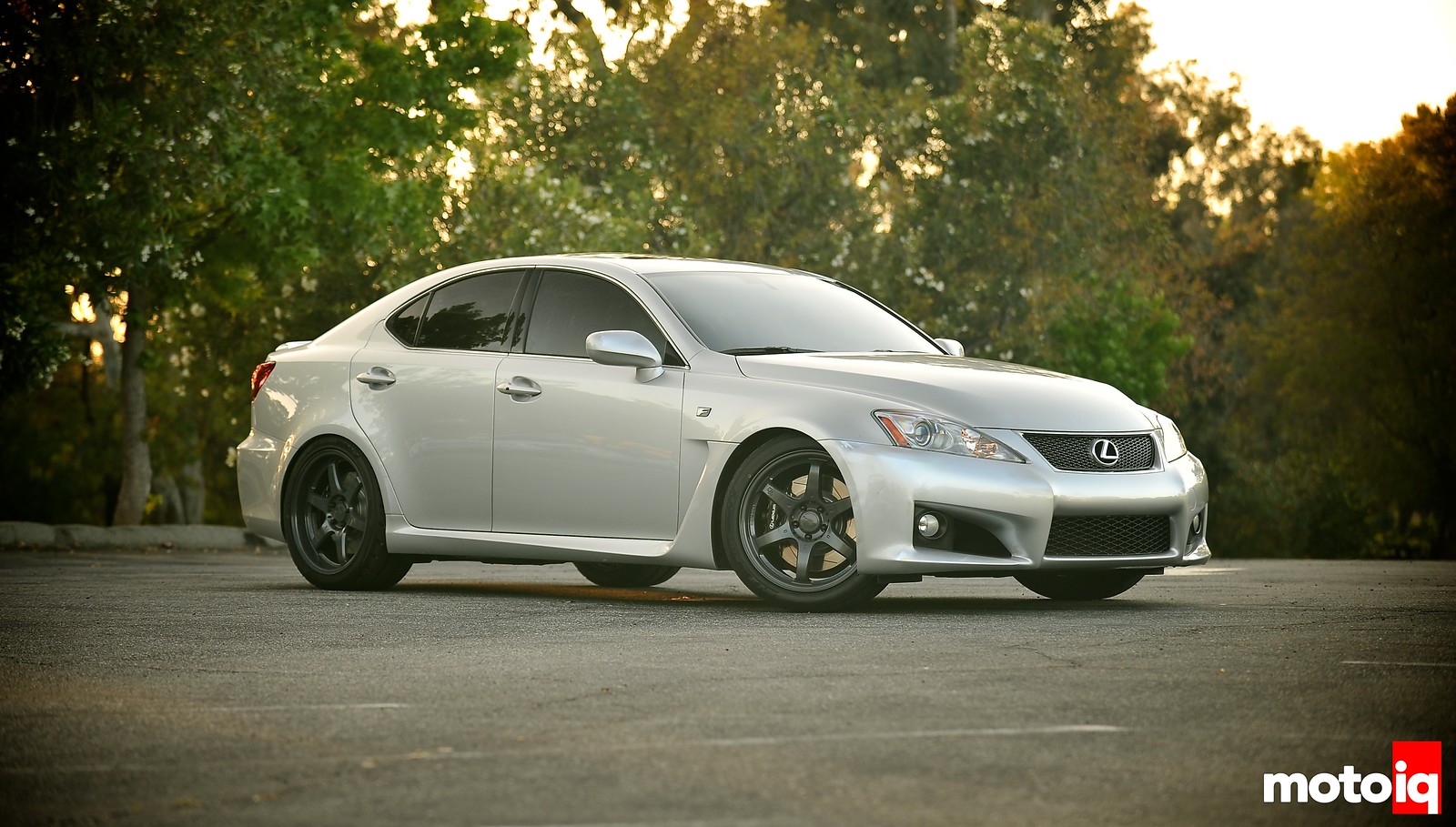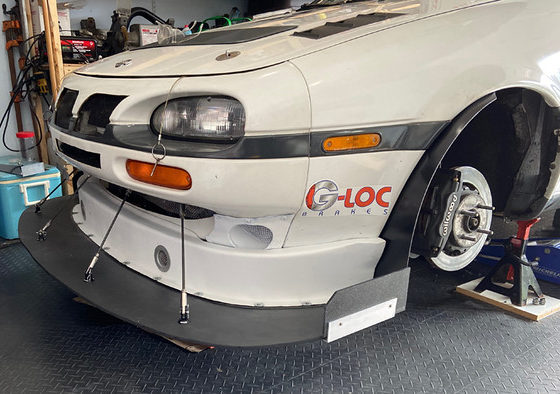
You can see how the endlink is now mounted more forward. This reduces the lever arm on the sway bar giving it less leverage to twist the bar in torsion effectively making it stiffer.
Before with the stock front and Sikky rear bar in the center hole of its three way adjustment. The car would rotate and the tail come out under trail braking. Although this was useful, some people might not like it. Now with the front bar set stiffer, the car is more neutral. If the rear bar is put in the full stiff position the tail happiness returns. With our modded bar you can feel the reduced roll and improved response to the steering as well.
Our hack complements the Sikky bar well and we like free! This mod would work for any car with a sway bar with vertically flattend ends with end links that are ball joint style.



17 comments
If you’re able to measure the distance from the bushing center to the end link holes on the bar, you can calculate the %change in leverage ratio from stock. If you have the stock specs… easy peasy to calculate the new effective torsion spring rate!
Of course but the bar is not a simple torsion tube, there are two bends in the bar before that point and a kink in the middle as stated in the article.. That’s why we gave an approximate gain.
Why not do a simple test? Disconnect one end link and hang 100lb from the front hole and then the rear hole and compare deflection.
Knowing the exact amount of stiffness increase isn’t relevant, because what are you going to do with the info? It’s not like you are designing a bar from scratch and need to figure out what diameter you need. You are adding stiffness to an existing design and you don’t have much choice as far as how far forward you can make the hole. For me it’s not worth the time when I can calculate it close enough.
The Puhn sway bar formula uses the angled length of the lever squared, as the major part of the denominator. Looks like it would be twice the stiffness increase you noted for the shorter arm, using Puhn’s method. Testing is best, as it includes bushing flex. But using a calculator is easier. http://www.gtsparkplugs.com/Sway-Bar-Calculator.html
My own calculator has more math for additional bends.
This is genius. Nice DIY!!!
well I know what I’ll be doing next weekend or when my FIGS LCA arrives…
Wow, it’s not easy to drill thru a sway bar like that. Kudos!
With a good drill bit its not too bad.
Mike, bottom line is you nailed it with the 2nd hole location, providing neutral handling with rear bar in the middle setting. Does your formula show a softer or stiffer rate due to center bends? Well done!
The more bends the softer.
“My own calculator has more math for additional bends.” Just curious Mike, do you alter the Puhn formula input by adding the extra length between bushings, due to the bends ? Some engineers use industrial pipe flex programs to model bar stiffness.
FYI, our bench testing showed when the span between link holes at bar ends is much greater than bushing span, and rubber bushings are used, the Puhn rate for a “Puhn” type bars can be almost 50% softer. Due to rigid body bar motion under load.
I use Nissan’s model and equations. I used to use it at work and still do. You input the diameter, ID and OD if tubular, Length between brackets, distance from bracket to control arm mounting point, lateral difference, number of bends, bend degrees, and motion ratio. To be honest I don’t use it much, only when I get to design something from scratch. Or if the customer wants to pay for my time for me to model their car and redo everything. I usually have to work with what’s available like most engineers. The majority of my work, I get hired for a day or two and make the car better with what’s available, tell the customer what they need to do then get hired for another test session which is usually pretty close to spot on. A lot of customers can’t give me the input info for their cars and don’t want to pay for our shop time for us to measure it so I don’t have a super-accurate model going in. I do have a lot of experience though and my first guess is usually pretty close if not spot on. Most customers only want me to come and turn the shock knobs on the expensive shocks they don’t understand and set the alignment and tire pressures to my recommendations. Usually, this alone makes a huge difference and seconds off lap times. Not too many people get that all of this is a cheap way to go faster. Most want more power and crazier aero because it’s sexy I guess. If you follow what I do you will notice that most of my cars I have had success with a low buck, low investment, low power, and efficient but minimal aero.
The Nissan bar program sounds impressive, and links back to the rate at the wheel using the MR. And based on your experience and customer demands it’s a limited use tool. I understand how people don’t know how to adjust coilovers, like trying to set ride height with the preload setting. I worked on the suspension of a Mazdaspeed6 that was a top finisher in ESP Solo 1 Nationals. He used “Fat Cat” to dial in shocks and spring rates, and shock tuning was a huge factor https://www.youtube.com/watch?v=sFxc08QbsGM . The “Cat” did use a fudged MR in the rear to soften springs, a big mistake.
When you worked for Nissan Racing, did you run into Kas Kastner? He was once with Group 44 racing, and helped me with my 68 Triumph SCCA DP project, along with his mechanics Brian & Lanky.
“Our Project Lexus IS-F has never gotten a performance front swaybar even though it has a larger adjustable Sikky Manufacturing rear anti swaybar. The main reason is no one makes a front bar for it!”
… doesn’t Sikky also sell a front bar? I see one listed on their site for the ISF. Is there a functional reason you didn’t use that instead of doing this modification (other than cost)?
I looked and you are right, Sikky now has a front bar but they didn’t for a few years. The main reason I did this was I had the car on the lift to change the oil, was looking at the front bar and had an idea!